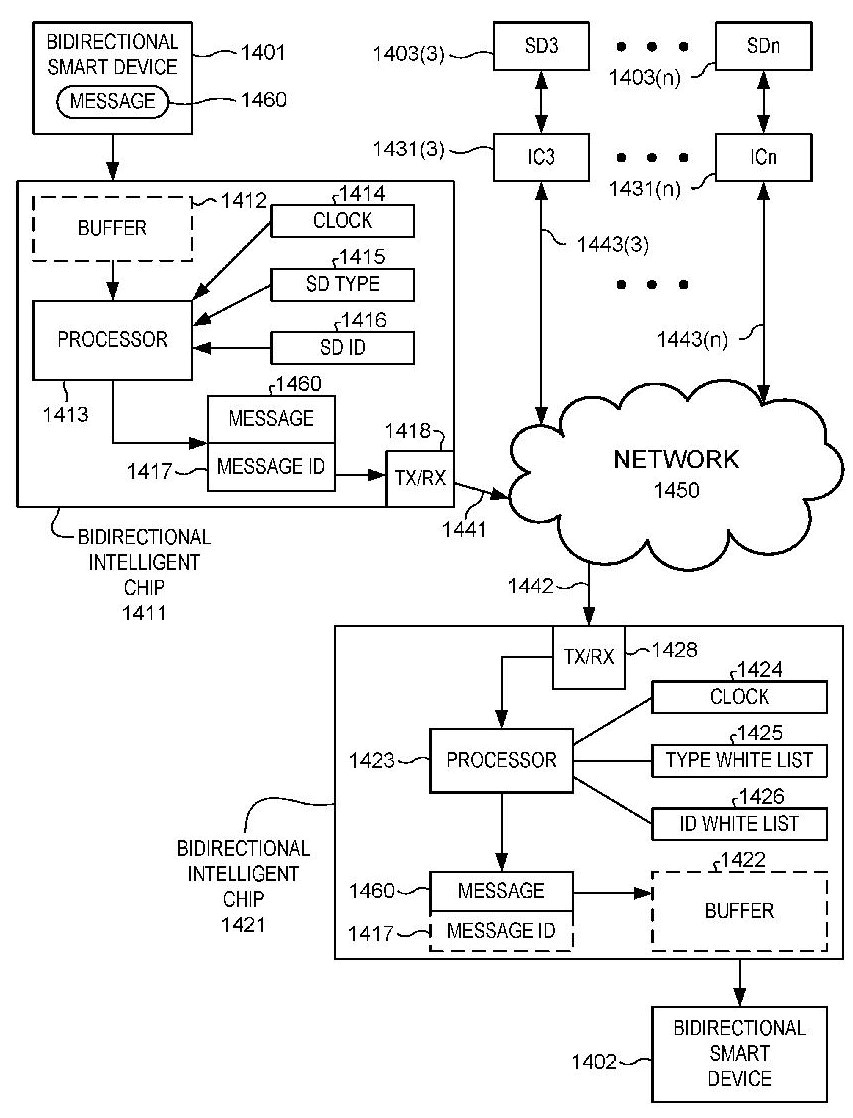Patent Pipeline: Securing IoT
This identifier consists of a fixed portion that uniquely identifies the associated sending device as well as a variable portion, and the receiving intelligent chip includes a module that approves messages by validating both the fixed portion AND the variable portion of the identifier.
Fixed and Variable Portion Identifiers
U.S. Patent No. 9,432,378 for “Internet-of-Things Security” is also the creation of independent inventor Jerome Svigals. Granted just over a year ago, this patent covers smart devices on a network that are identified and verified by their fixed-portion and variable-portion identifiers. It is a hardware and software solution that takes the technology from his previous patent to a new level.
The invention covered by this patent consists of at least two bidirectional smart devices that are adapted to send and receive messages over an IoT network. Each smart device is coupled to the network via a bidirectional intelligent chip, logic device or other smart device. When the device is put in message-sending mode, it appends an identifier to each message that emanates from its associated sending smart device. The identifier consists of a fixed portion that uniquely identifies the associated sending smart device, as well as a variable portion that contains a secret random starting point. This secret random starting point can regularly be re-set just as a password can be re-set. The receiving intelligent chip, logic device, or smart device invokes a module contained within each intelligent chip that is configured to screen incoming messages by validating both the fixed portion AND the variable portion of the identifier.

Figure 14 from U.S. Patent No. 9,432,378 provides a schematic of IoT security message flow without human intervention.



















